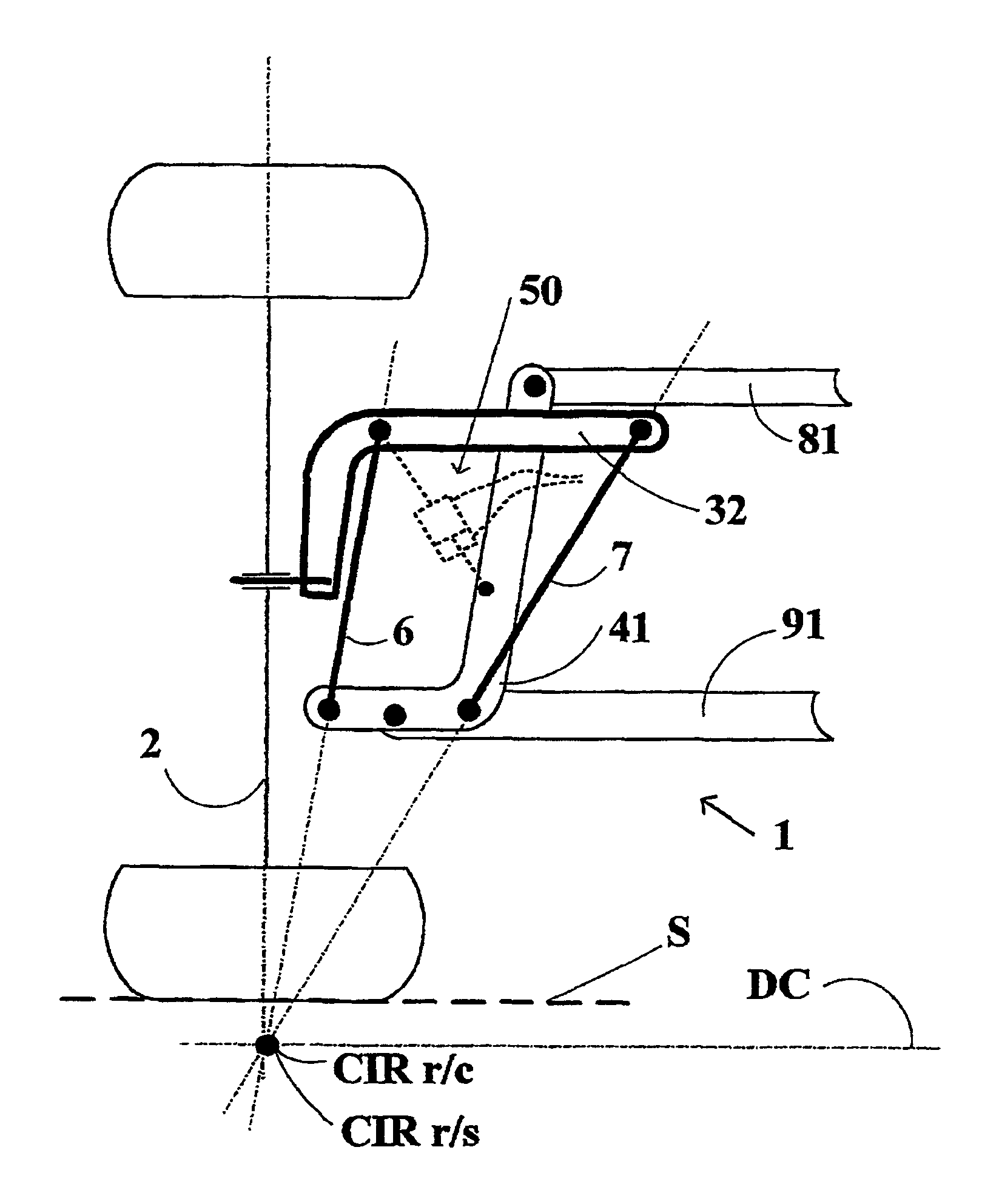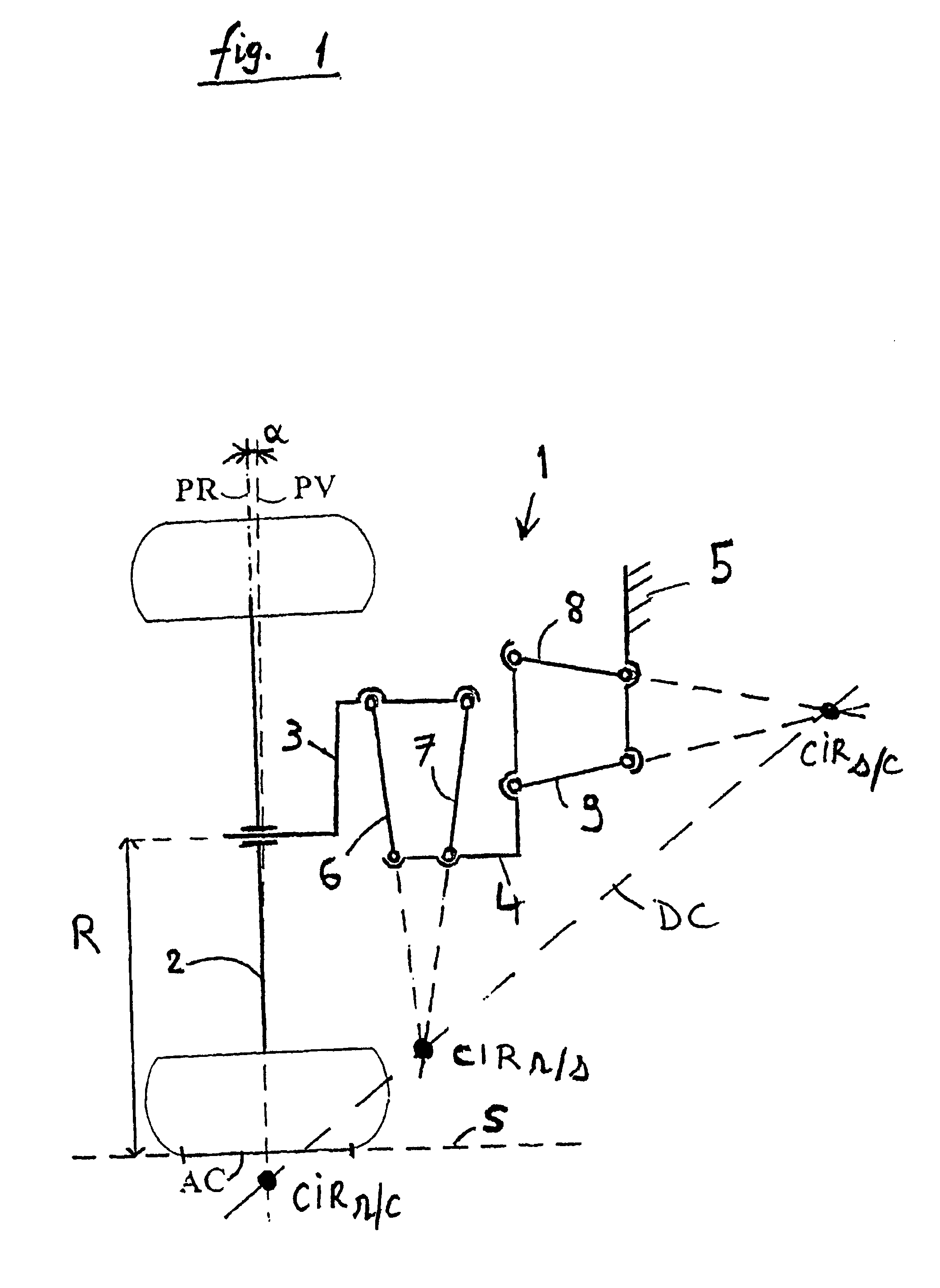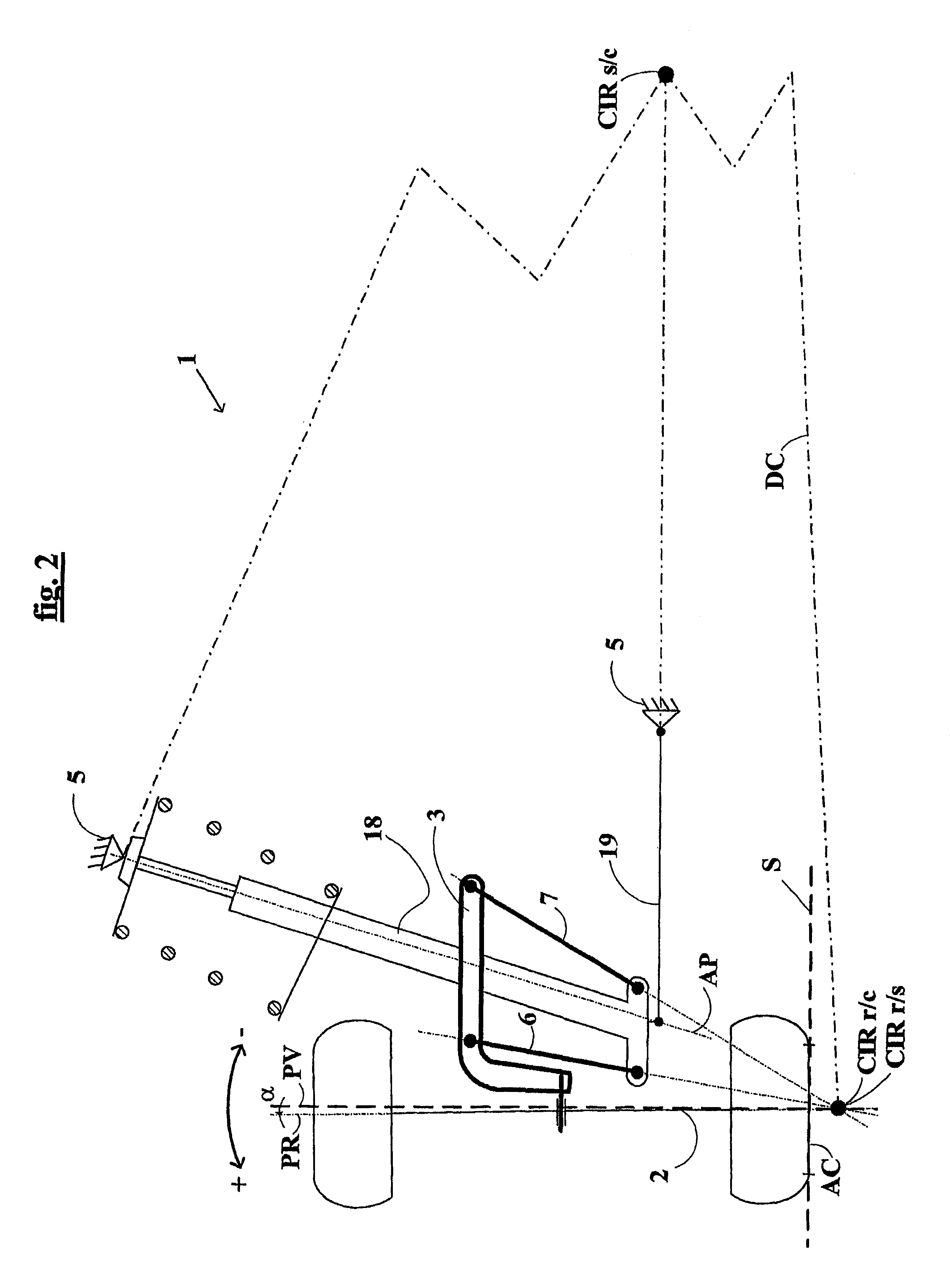Vehicle suspension with camber control
a camber control and suspension technology, applied in the direction of resilient suspensions, vehicle springs, vehicle components, etc., can solve the problems of affecting the effect of the suspension, affecting the stability of the vehicle, and unable to implement the suspension on most current vehicles
- Summary
- Abstract
- Description
- Claims
- Application Information
AI Technical Summary
Benefits of technology
Problems solved by technology
Method used
Image
Examples
Embodiment Construction
FIG. 1 represents in a flat longitudinal view the principle of a suspension device according to the invention. This flat representation (i.e. in two dimensions) is very convenient, since it shows clearly how the device according to the invention is distinguished from the devices according to the state of the art.
The suspension device 1 comprises a wheel carrier 3, which is designed to maintain the plane PR of a wheel 2 relative to the body 5 of a vehicle. The wheel, which has a radius "R", is supported on the ground S through its contact area AC. The wheel carrier 3 is connected to the body 5 by means (4, 6, 7, 8, 9) which allow it two degrees of freedom. The camber movement of the wheel is permitted by a connection of the wheel carrier 3 to an intermediate support 4 by connection rods 6 and 7. The suspension spring movement is permitted by a connection of the intermediate support 4 to the body 5, by upper 8 and lower 9 arms (or triangles). Thus, the suspension device is configured ...
PUM
 Login to View More
Login to View More Abstract
Description
Claims
Application Information
 Login to View More
Login to View More - R&D
- Intellectual Property
- Life Sciences
- Materials
- Tech Scout
- Unparalleled Data Quality
- Higher Quality Content
- 60% Fewer Hallucinations
Browse by: Latest US Patents, China's latest patents, Technical Efficacy Thesaurus, Application Domain, Technology Topic, Popular Technical Reports.
© 2025 PatSnap. All rights reserved.Legal|Privacy policy|Modern Slavery Act Transparency Statement|Sitemap|About US| Contact US: help@patsnap.com



